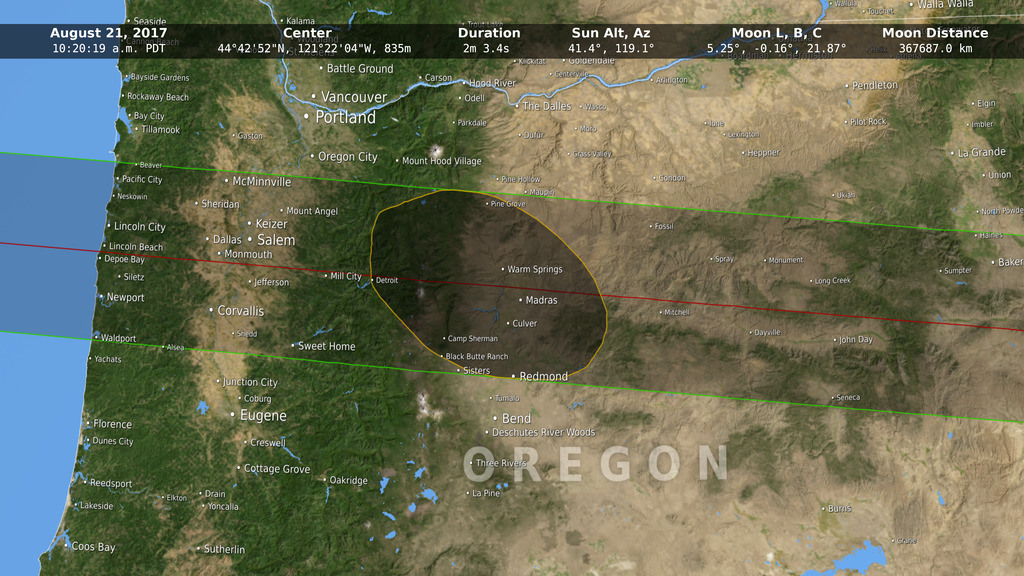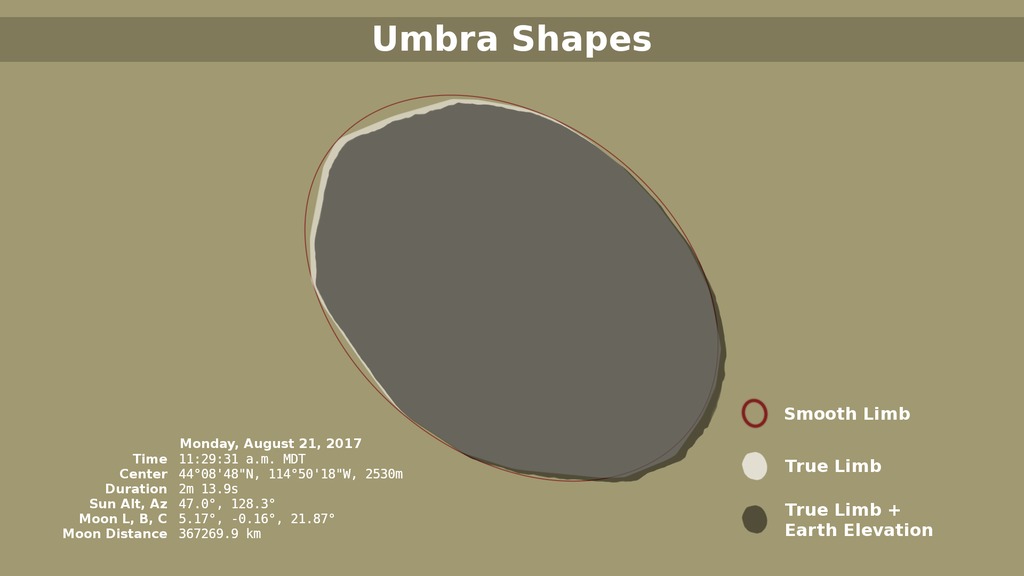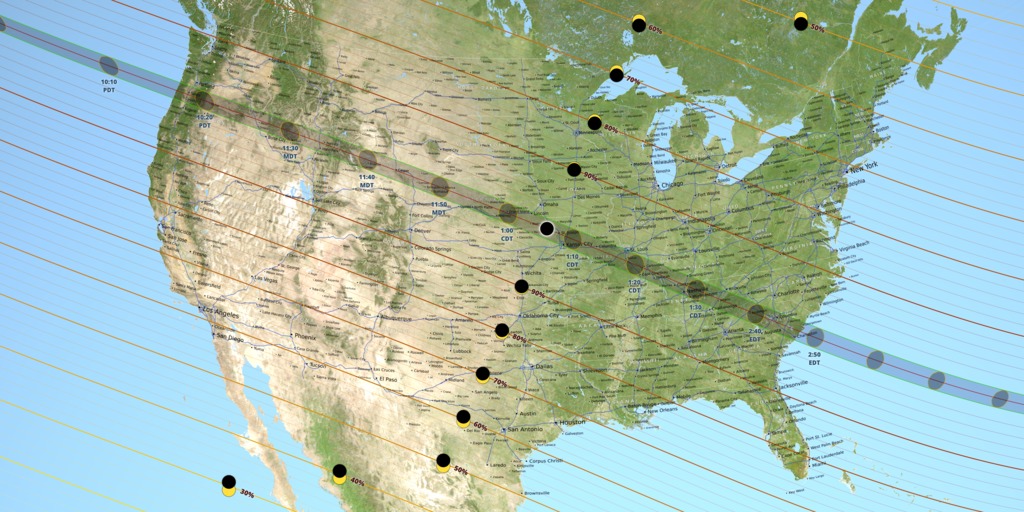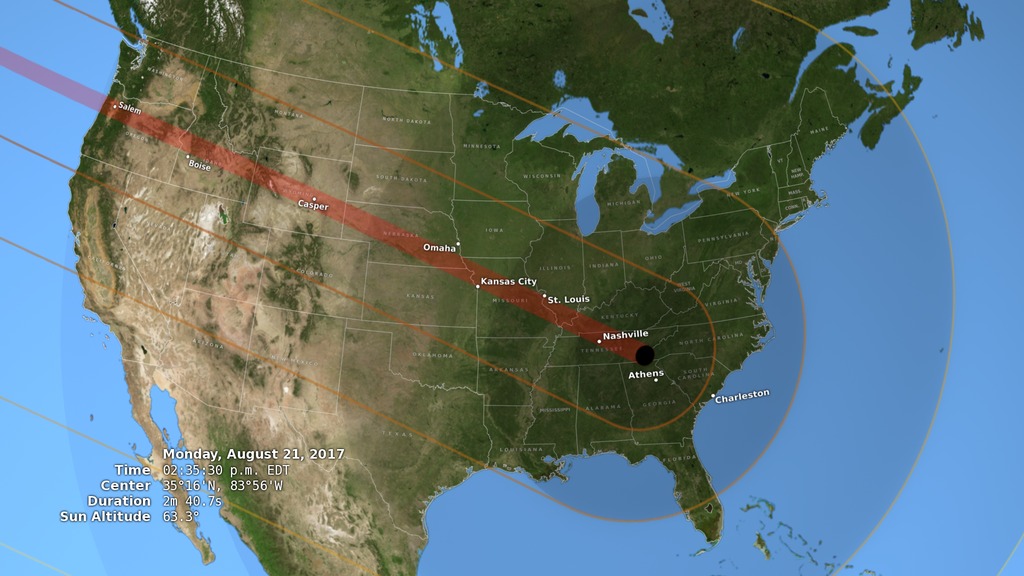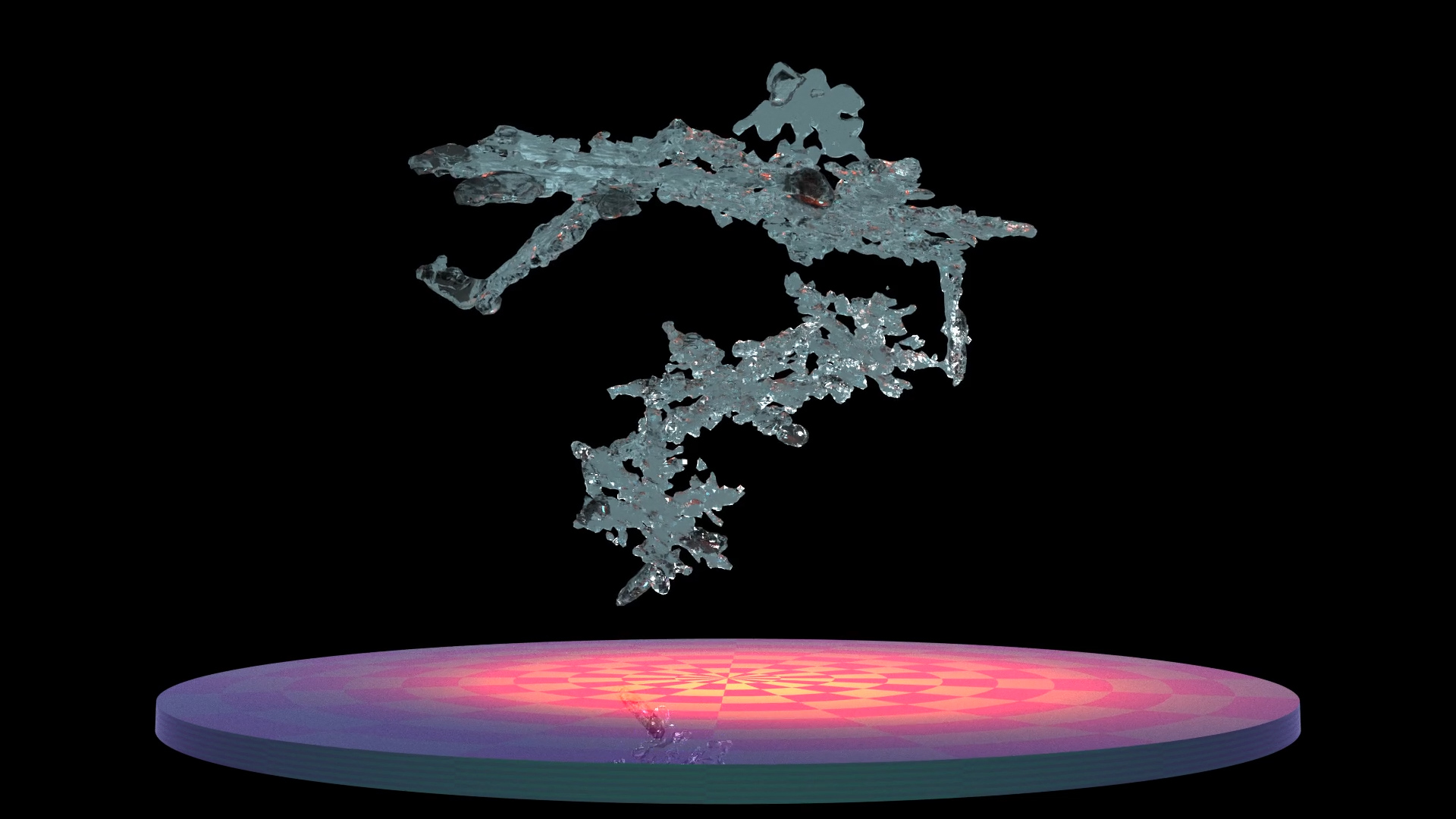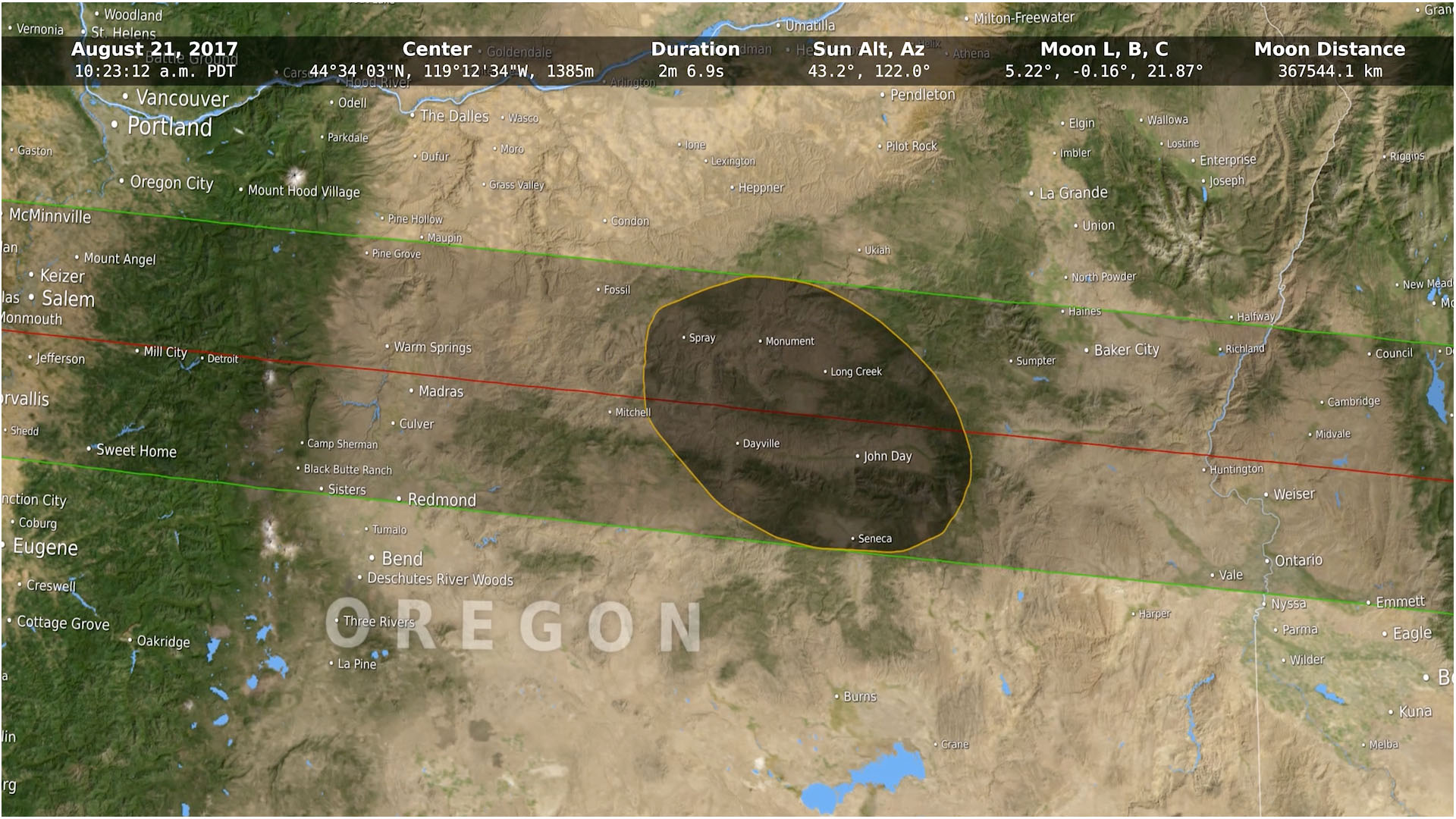2017 Path of Totality: Oblique View
This animation closely follows the Moon's umbra shadow as it passes over the United States during the August 21, 2017 total solar eclipse. Through the use of a number of NASA datasets, notably the global elevation maps from Lunar Reconnaissance Orbiter, the shape and location of the shadow is depicted with unprecedented accuracy.
During the August 21, 2017 total solar eclipse, the Moon's umbral shadow will fly across the United States, from Oregon to South Carolina, in a little over 90 minutes. The path of this shadow, the path of totality, is where observers will see the Moon completely cover the Sun for about two and a half minutes.
People traveling to see totality, likely numbering in the millions for this eclipse, will rely on maps that show the predicted location of this path. The math used to make eclipse maps was worked out by Friedrich Wilhelm Bessel and William Chauvenet in the 19th century, long before computers and the precise astronomical data gathered during the Space Age.
In keeping with their paper and pencil origins, traditional eclipse calculations pretend that all observers are at sea level and that the Moon is a smooth sphere centered on its center of mass. Reasonably accurate maps, including this one, are drawn based on those simplifying assumptions. Those who want greater accuracy are usually referred to elevation tables and plots of the lunar limb.
This animation shows the umbra and its path in a new way. Elevations on the Earth's surface and the irregular lunar limb (the silhouette edge of the Moon's disk) are both fully accounted for, and they both have dramatic and surprising effects on the shape of the umbra and the location of the path. To read more about these effects, go here.
The animation runs at a rate of 30× real time — every minute of the eclipse takes two seconds in the animation. The oblique view emphasizes the terrain of the umbral path. For an overhead view, go here.
| Earth radius | 6378.137 km |
|---|---|
| Ellipsoid | WGS84 |
| Geoid | EGM96 |
| Moon radius | 1737.4 km |
| Sun radius | 696,000 km (959.645 arcsec at 1 AU) |
| Ephemeris | DE 421 |
| Earth orientation | earth_070425_370426_predict.bpc (ΔT corrected) |
| Delta UTC | 69.184 seconds (TT – TAI + 37 leap seconds) |
| ΔT | 68.917 seconds |
For More Information
Credits
Please give credit for this item to:
NASA's Scientific Visualization Studio
-
Visualizer
- Ernie Wright (USRA)
Release date
This page was originally published on Tuesday, December 13, 2016.
This page was last updated on Sunday, January 5, 2025 at 12:07 AM EST.
Missions
This page is related to the following missions:Series
This page can be found in the following series:Datasets used
-
DEM [SRTM: SIR-C]
ID: 481 -
BMNG (Blue Marble: Next Generation) [Terra and Aqua: MODIS]
ID: 508Credit: The Blue Marble data is courtesy of Reto Stockli (NASA/GSFC).
This dataset can be found at: http://earthobservatory.nasa.gov/Newsroom/BlueMarble/
See all pages that use this dataset -
DEM (Digital Elevation Map) [LRO: LOLA]
ID: 653 -
DE421 (JPL DE421)
ID: 752Planetary ephemerides
This dataset can be found at: http://ssd.jpl.nasa.gov/?ephemerides#planets
See all pages that use this dataset -
SLDEM2015 (DIgital Elevation Model) [LRO/SELENE: LOLA/TC]
ID: 948A digital elevation model of the Moon derived from the Lunar Orbiter Laser Altimeter and the SELENE Terrain Camera. See the description in Icarus. The data is here.
See all pages that use this dataset
Note: While we identify the data sets used on this page, we do not store any further details, nor the data sets themselves on our site.
